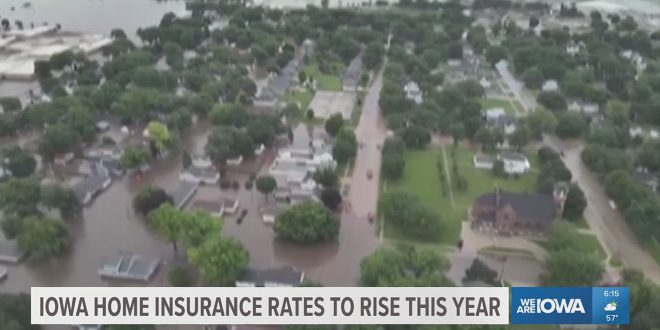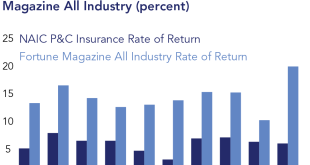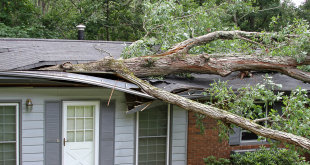If you’ve noticed your insurance premiums creeping up lately, you’re not alone. It’s not just you; extreme weather events are playing a major role in reshaping the insurance landscape. Insurers are facing a surge in payouts due to increasingly frequent and intense natural disasters, and they’re passing those costs on to policyholders like you and me. It’s a tough situation, leaving many wondering how to afford coverage in an era of escalating climate risks. Are we prepared for what’s coming? I honestly don’t know, but it feels like we need to be.
The Rising Tide of Extreme Weather Events
Attribution to Climate Change
Let’s be real, the elephant in the room is climate change. Scientists have been warning us for years, and now we’re seeing the consequences unfold in real-time. Study after study confirms the link between rising global temperatures and the increasing frequency and severity of extreme weather. It’s not just a coincidence that hurricanes are getting stronger or wildfires are more widespread. The correlation is pretty clear, and it’s something we can’t ignore. Personally, I think it’s a bit scary, but maybe that’s just me.
Types of Extreme Weather and Their Impact
Think about the headlines you’ve seen recently. Hurricanes tearing through coastal communities, wildfires consuming entire towns, floods inundating major cities, and droughts crippling agricultural regions. These aren’t just isolated incidents; they’re part of a disturbing trend. Each type of extreme weather event brings its own unique set of challenges and devastating impact. For example, a major hurricane can cause billions of dollars in property damage, leaving countless people displaced and in need of assistance. It’s truly heartbreaking to witness the aftermath of these disasters. And, well, property damage also means insurance payouts go up, naturally. It’s all connected.
Impact on Insurance Premiums
Increased Claims and Payouts
Insurance companies aren’t charities, right? They’re businesses. So, as extreme weather events become more common and costly, insurers are feeling the pinch. Over the past decade, data shows a significant increase in insurance claims and payouts related to natural disasters. This financial burden is forcing insurers to re-evaluate their pricing models and, ultimately, raise premiums. I kinda feel like we’re stuck between a rock and a hard place here.
Reinsurance and Risk Modeling
To manage the escalating risks, insurance companies are turning to reinsurance and advanced risk modeling. Reinsurance is basically insurance for insurance companies, allowing them to offload some of their financial exposure. Risk modeling uses sophisticated algorithms to predict the likelihood and potential impact of future extreme weather events. These models help insurers understand the risks they’re taking on and adjust their premiums accordingly. But, honestly, how accurate can these models really be? It’s hard to predict the future, especially when it comes to something as unpredictable as the weather, but I guess they’re trying their best.
Geographic Variations in Premium Increases
Not all areas are created equal when it comes to weather-related risks. Coastal regions prone to hurricanes, arid regions susceptible to wildfires, and low-lying areas vulnerable to floods are seeing the most significant increases in insurance premiums. In some cases, the risk is so high that certain areas are becoming “uninsurable,” leaving residents with few options. It’s a really worrying trend, and it raises questions about the future of these communities. What happens when no one can afford to live there anymore? Just thinking out loud.
Challenges and Potential Solutions
Affordability and Accessibility of Insurance
Let’s face it: insurance can be expensive. And as premiums continue to rise, it’s becoming increasingly difficult for homeowners and businesses in high-risk areas to afford adequate coverage. This raises serious concerns about affordability and accessibility. Some potential solutions include government subsidies to help low-income residents afford insurance, or the development of alternative insurance models that are more tailored to specific risks. It’s gotta be done, or at least, that’s my two cents.
Mitigation and Adaptation Strategies
While insurance is essential for managing the financial risks associated with extreme weather, it’s not a silver bullet. We also need to focus on mitigation and adaptation strategies to reduce the impact of these events in the first place. This includes investing in infrastructure improvements, such as seawalls and flood control systems, as well as promoting sustainable land-use practices and reducing greenhouse gas emissions. It’s about building more resilient communities that can better withstand the challenges of a changing climate. You know, like planting trees and stuff. Just a thought.
The Future of Insurance in a Changing Climate
The insurance industry is at a crossroads. As extreme weather events become more frequent and intense, insurers need to adapt and innovate to remain viable. This could involve developing new insurance products and services that are better suited to the needs of a changing climate, as well as collaborating with policymakers and communities to promote resilience. The future of insurance depends on our ability to work together to address the challenges ahead. If you ask me, and you kind of are, I’d say it’s also an opportunity to reinvent the wheel and come up with something better, more sustainable, and way more affordable.
So, there you have it. Extreme weather is definitely driving up insurance premiums, and it’s a trend that’s likely to continue. It’s a complex issue with no easy solutions, but by understanding the challenges and exploring potential solutions, we can work towards a more resilient and affordable future. I really think it’s up to you and me to stay informed, adapt, and maybe even demand some changes. It might be hard, but hey, we gotta try, right? What are your thoughts on all this?
 seeme
seeme




